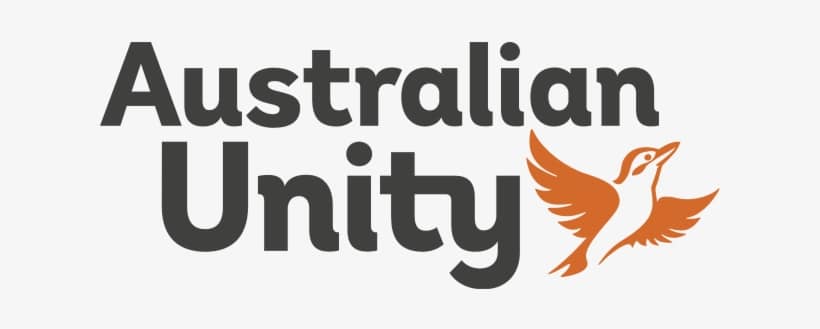Brands you can compare with us



We’ve partnered with Compare Club to bring you a range of health insurance policies to compare side by side.
All parents naturally want the very best health care possible for their children, which is why many take out health insurance which covers their kids. However, there are many different health insurance policies available in Australia, so finding one that is right for your family’s needs is important.
Savvy is here to help. You can compare family, couples and single parents health insurance policies quickly and easily through us. You'll be able to consider instant online quotes from a panel of trusted health funds and compare their features side-by-side to help determine which one best suits your family’s needs. Start the health insurance comparison process through Savvy today.
What are my options for health insurance for my kids?
Health insurance policies which are designed to cover children only are very uncommon, although such policies do exist in Australia. Most children are covered either through a family health insurance policy or one for couples or single parents.
Family health insurance
This type of policy will offer private health insurance cover for up to two parents and their children (and infants). The number of children that can be covered by a family health insurance policy is not limited.
Couples health insurance
Couples health insurance policies often come with slightly less premiums than family policies and cover two adults only.
Single parent health insurance
A single parent policy covers just one adult and their dependent children. It can prove to be cheaper than a family policy, as it offers cover for only one adult. However, this will depend on the health provider you choose and the type and level of health insurance you buy.
Child-only health insurance
Very few health funds offer child-only health policies, since most children are classified as dependents and are covered by their parent's health insurance. However, there are exceptional circumstances where health cover is required only for a child, such as if their parent or parents are covered by an Australian Defence Force medical package which doesn’t provide cover for dependents.
What are the age rules for kids and dependents on health insurance policies?
Prior to 2021, the age limit for dependents on an adult’s health insurance policy was capped at 25. However, changes to the Australian Government rules for children and dependents adjusted this limit to age 31 and made changes to the upper age limit for dependents with a disability.
Increasing the dependent age limit from age 25 to 31 isn’t compulsory for health funds, but many funds are implementing this change. There are still several conditions which apply to dependent adults on their parents’ health insurance policies, which are:
- Adult dependents must still live in the same home as their parents
- A dependent must be single with no dependents of their own
- There are earning limits which apply to adult dependents who are not students
- Student dependents must be enrolled in full-time education
If you have an adult child still living at home and you had to cancel their health insurance under the previous rules at the age of 25, you may now be able to include them again on your family or couple policy up to their 31st birthday. This is the age at which the Lifetime Health Cover loading kicks in.
Dependents with disabilities
The changes to health insurance regulations in 2021 abolished the upper age limit for adult dependents with disabilities. This means that those with disabilities who are dependent on their parents can now be covered by their parents’ health insurance policies indefinitely and are no longer required to take out their own health insurance policies. However, not all insurers will offer this extension to family cover.
How should I compare health insurance cover which includes my kids?
There are two different types of health insurance in Australia. Hospital cover can provide benefits for expenses incurred whilst admitted to hospital, while extras cover can help pay for healthcare treatments and services outside of hospital which aren’t covered by Medicare, such as dental and physio services. It’s also possible to get a combined hospital and extras policy which includes kids and combines both types of insurance into one policy.
How to compare hospital cover
Areas to look at and compare when you’re considering hospital cover include:
- Level of cover – choose from basic, bronze, silver and gold policies. Each of these tiers of cover provides benefits for specific medical conditions. The conditions which must be covered at each tier level are regulated by the government. Therefore, two silver policies must offer cover for identical conditions as a minimum legal requirement (though insurers can opt to add covered areas above the minimum). A basic policy will be the cheapest one on offer but will provide the least cover, with the reverse being true of a gold policy.
- Cost of policy – we all want to find the best deal as far as our health insurance is concerned. However, the cheapest policy available may not always offer the most suitable coverage, so it pays to compare policies carefully. You can do this right here with Savvy.
- Inclusions and exclusions – compare what's included in your policy and what’s excluded so you know exactly what you’re paying for.
- Excesses and co-payments – find out if you'll be required to pay an excess for your children if they're admitted to hospital and/or a co-payment to contribute to the cost of their stay. Many health funds do not charge an excess for children’s hospital admissions, but this is an area you should look at closely when comparing hospital cover policies.
How to compare extras cover
Extras cover is less highly-regulated by the Australian Government, so there may be greater differences between health funds. These are some of the areas to compare when looking at extras cover:
- Benefit limits – these apply to different areas of treatment. There may be an overall policy limit, a per-person limit and a per-treatment limit which applies. For example, a family extras cover policy may offer a total of $5,000 cover for dental treatment in one year, with $3,000 allowed for major dental and $2,000 for minor dental treatment, and an $800 limit to be used per person in one year. Compare these different benefit limits to help decide which one may fit your family and kids’ needs.
- What treatment areas are covered – this is important when considering your family’s current health needs and pre-existing conditions. For example, if your kids are sports-active, and experience regular sports injuries requiring physio, you may want to look at an extras policy that allows flexibility in how you can spend your overall benefit limit to allow more to be spent on areas you may need for.
- Waiting periods – these also vary between health insurance providers, as they aren’t regulated by the Australian Government, so find out what waiting periods may apply once you’ve purchased your policy.
- Special offers and additional benefits – many health funds offer additional extras and benefits to attract new customers. These can range from subsidised weight loss programs to a free phone helpline where you can speak to a nurse 24/7. Decide which of these health and wellness benefits your family and children may find useful when comparing funds.
The types of health insurance
Why compare health insurance through Savvy?
Our comparison tool doesn't cost you a cent, allowing anyone to compare offers from trusted insurers around Australia for free.
You can consider the inclusions, premiums, benefits and other key factors easily with us, whether you're at home or on the go.
Considering offers from trusted insurance providers can help give you peace of mind that you're comparing high-quality policies.
Frequently asked questions about health insurance for kids
Yes – they are automatically covered, but you'll have to fill in a Medicare enrolment form before you can claim on their behalf and get cover for your baby. This should be completed as soon as possible after birth and can either be done online yourself through MyGov or with the Medicare enrolment form which will be provided to you through your midwife or nurse in your new baby pack.
Yes – if you don’t have private health insurance, the family income threshold at which you have to pay the Medicare Levy Surcharge (MLS) increases by $1,500 for each child you have after the first one. This means you’re allowed to earn more income for each child you have before you have to pay the MLS if you don’t have private health insurance.
Some kids up to 17 years old can receive free basic dental treatment through Medicare under the Child Dental Benefits Schedule. This provides dental treatment for some children whose parents receive Centrelink payments including Family Tax Benefit Part A, parenting payments, youth allowance or disability allowance.
Single parent and family policies allow infants or children to be added to a health insurance policy free of charge. However, there may be additional premiums charged for dependant young adults once they reach a certain age, such as 18 or 21, particularly if they're no longer students or studying full-time. Check with your insurer to determine whether you’ll have to pay more for your insurance policy down the line.
Helpful guides on health insurance
Looking for health insurance to cover your conditions or treatment?
Read one of our helpful guides on a range of different ailments and potential hospital or extras treatments to help you find out if they're covered.
COMPARE HEALTH INSURANCE TODAY
Disclaimer:
Savvy is partnered with Compare Club Australia Pty Ltd (AFS representative number 001279036) of Alternative Media Pty Ltd (AFS License number 486326) to provide readers with a variety of health insurance policies to compare. Savvy earns a commission from Compare Club each time a customer buys a health insurance policy via our website. We don’t arrange for products to be purchased from these brands directly, as all purchases are conducted via Compare Club.
Savvy’s comparison service is provided by Compare Club. Compare Club compares selected products from a panel of trusted insurers and does not compare all products in the market.
Any advice presented above or on other pages is general in nature and doesn’t consider your personal or business objectives, needs or finances. It’s always important to consider whether advice is suitable for you before purchasing an insurance policy.
For any further information on the variety of insurers compared by Compare Club or how their business works, you can read their Financial Services Guide.











